Located pretty much in the center of France, Limousin is void of any of France’s famous mountain ranges. Nor are there any of the sigh-inducing beaches of France’s stunning coastlines. It doesn’t lure the wine aficionados with Burgundy, Bordeaux or Champagne. And you won’t find fields of lavender to frolic in. But it’s here that many of France’s most famous brands come to life: the softest lambskin Louis Vuitton gloves, the latest collections by designers like Hermès, Dior and Channel, and the finest porcelain that will grace the tables of Michelin-starred restaurants. You see, Limousin is synonymous with luxury goods and the family-run factories located here have long been the secret accomplices of France’s biggest luxury brands.
The Leather Gloves and Belts of Saint-Junien
Saint-Junien is the luxury leather glove capital. The village sits at the heart of a large breeding bassin of Limousin’s livestock, and leather work is said to date back to the 11th century here.
Leather tanning and the production of leather goods became Saint-Junien’s main industry by the 17th century. In the heyday of luxury leather gloves when driving gloves were incredibly fashionable, there were 70 leather glove factories and 17 leather tanneries.
Around the 1950s, leather driving gloves became old fashioned and new competition from Asia saw the decline in production. Many of the leather glove factories and tanneries were forced to close.
Though only one tannery and three leather glove factories remain in Saint-Junien today, nearly half of France’s leather glove production (around 480,000 pairs each year) takes place in the village.
Agnelle, of of the three remaining leather glove factories, invites visitors in for a tour of the factory and to admire the centuries of know-how this tiny French village has procured. The skilled leather works produce gloves not only under the Agnelle brand, but also for some of the biggest names in French fashion like Dior and Louis Vuitton.
The factory tour, which anyone can arrange by booking it in advance through the Saint-Junien Tourism Office, is fascinating. I had no idea how detailed the process is to produce a pair of leather gloves until I followed the latest style of Louis Vuitton driving gloves from a single piece of leather to a finished luxury product.
The Agnelle factory receives the design and pattern, creates the prototype and once it’s approved, the gloves are ready to start their production. Each and every pair is handcrafted by a team of skilled leather workers. Each an integral cog, I followed the various leather workers through the production process.
Each pair starts as a single piece of leather that is cut from a roll. The leather is stretched by hand before being cut into several pieces.
The pieces of leather are then cut into the several parts: the thumbs, the hand and between the fingers. Tools from the 19th century are still used to mold these parts and then the whole tool is placed inside a cutter. Each pair of gloves is typically cut individually, but the process can cut up to three pairs of gloves at once.
The pieces then travel upstairs to another part of the factory where they are sewn together, any buttons, zippers or other parts of the design are added, the lining is sewn in and finally the gloves are ironed. From beginning to end, a single pair of gloves will be worked on by at least six different leather workers and could take three hours or more to complete.
Different sewing machines and leather workers each have a part of the assembly process. The fingers are sewn together on one machine, the cuffs are sewn on another with a different kind of stitch, and the lining sewn in on yet another kind of machine.
The finished gloves are ironed on yet another machine called hot hands individually, before they’re finally buffed to a shine on the hot hands. Only then has each pair finished its production journey and is ready to be sent out to the client.
Agnelle even produces custom made gloves and clients have included Madonna’s long black leather gloves worn for the Emmy’s, gloves for Beyone’s and Lady Gaga’s costumes, and a pair of powder blue Ralph Lauren gloves for a certain current First Lady channeling Jackie-O during her husband’s inauguration (though Agnelle didn’t know who they were for when the gloves were made).
There’s also factory shop where Agnelle brand leather gloves in every size, color and design imaginable can be purchased at very reasonable prices.
Saint-Junien isn’t just a producer of luxury leather gloves. The Daguet factory produces leather belts for luxury brands, as well as leather belts and accessories under the Daguet brand.
Unlike Agnelle, Daguet’s factory isn’t open to the public for tours but I did get a special look at leather belt production. As with the gloves, belts aren’t as simple a process as I would have thought to produce.
Like gloves, leather belts start from a roll of tanned leather and a piece is cut by hand. Strips are then cut for the belt by a machine, before further being cut by hand to the size and mold. Depending on the style the pieces for the buckle and belt loop are also cut.
The strips of leather are then attached to a curved piece of nubuck. Another worker then trims the excess edges off with a machine.
The belts’ edges are then smoothed and hand dyed to match. They might receive more then one coat of dye, depending on the color. And luxury belts are only dyed with vegetable and plant dyes.
Finally, the tails of the belts are shaped and the holes punched in. The holes are punched according to exact spacing for each belt size.
But the belts still aren’t finished. Next, they’ll receive a series of stamps that include the size, brand and, most importantly, “fabriqué en France” (made in France). Of course, the stamps are all embossed on the belt by hand.
Though the production factory isn’t open to the public for tours of how luxury leather belts are made, Daguet also has a factory shop where you can purchase leather belts and bags produced under the Daguet brand.
The Tapestries of Aubusson
I must admit that tapestries really didn’t land on my radar as a luxury good. When I started this trip to discover Limousin’s luxury goods, I had in my head that I was being sent off to look at old, dusty rugs and wall hangings. I wondered how interesting it could possibly be and even if tapestries were still a desirable luxury good.
What I found was a fascinating world and a village in rural France well-deserving of a visit.
The village of Aubusson has been the World Capital of Tapestry since the Middles Ages and many tapestries hanging in museums, churches and castles around the world were made right here in this very village. In the heyday of tapestry, Aubusson had a population of around 8000 and 3000 were tapestry weavers. Though at that time, only men were weavers because it was believed that the long hours of leaning against and over the loom could cause women to have miscarriages.
Today, there’s just 120 weavers who carry on the work.
To truly understand tapestry, the first stop in Aubusson should be the Tapestry Cartoon Museum. Cartoons were the models that weavers used to weave the tapestry. And even that was a process, with the artist first drawing and coloring a draft that would be approved by the tapestry commissioner. Only after the commissioner was satisfied with the drawing, the artist would draw the cartoon again to scale of the exact size that the tapestry would be.
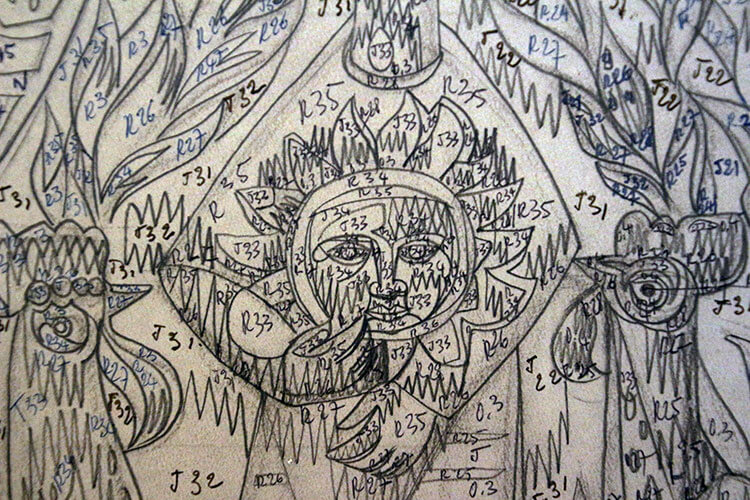
The Tapestry Cartoon Museum has not only restored a beautiful building right on the Creuse River, but its owner has painstakingly restored many cartoons that have been found. Though the art of weaving itself has not changed, cartoons went through a revolution. The earliest were works of art themselves, as the artist hand drew and painted the model and then scale cartoon. But through time, cartoons began to look like modern day paint-by-numbers and were simply black and white with a color code noted from a color system that was created.
The looms were also built to the size that the tapestry would be, and the cartoon was placed under the warp (threads). Most mind blowing of all, is I learned that the weavers actually weave tapestry upside down. To the weaver, the mess of threads on the back was the real work of art. They’d use a hand mirror to check their work as they weaved, but really the end result was a surprise to them.
I couldn’t quite wrap my mind around how the weavers would weave upside down, until I saw it in action at the Maison du Tapissier. Located in an old weaver’s house, you can watch one of the just 120 weavers left today weaving a tapestry. The weaver works from the cartoon placed under the weave. Most mind blowing, is that the tapestry is actually woven upside down. No more than one square meter of the tapestry can be woven per month and these highly skilled weavers can command upwards of €3000 per square meter for their work.
With her fingers quite literally stained blue and some even bandaged from the wool, the artist answered questions during my visit with a smile on her face. Her eyes never left her work though. She’d already been working on this particular tapestry for a year and some others she’d previously completed hung throughout the Maison du Tapissier.
The first people to really buy tapestries were the churches. In the Middles Ages, it’s thought that there was almost no literacy except within the church. The churches would utilize the tapestries to teach its parishioners biblical stories. But tapestries had a very practical function too – tapestries helped to insulate large, drafty places like churches and castles. Even back in the Middle Ages, tapestries were quite an investment due to the sheer amount of work required to weave them and they became status symbols of wealth an power.
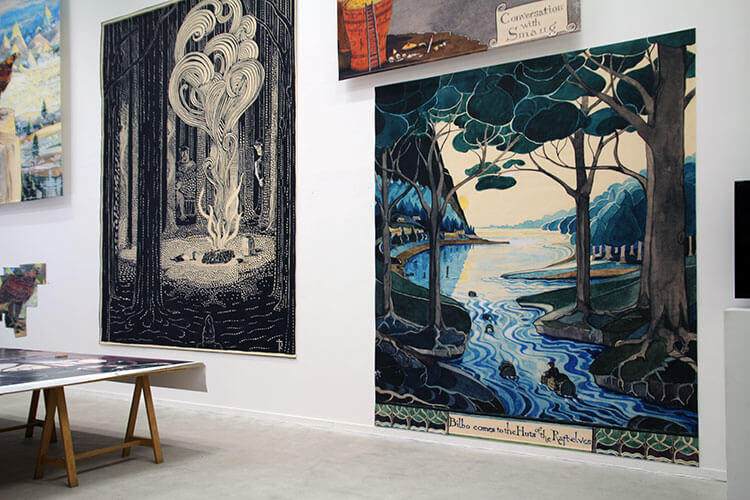
While the Cité Internationale de la Tapisserie walks through the history and evolution of tapestries – six centuries of history in their flagship space, The Tapestry Nave, to be precise – going far back beyond the Middle Ages to places like Iran and Peru, it was learning about tapestry in the modern day that was truly fascinating. Modern tapestries are still used to tell stories, like the set of 14 tapestries woven from the original illustrations of J.R.R. Tolkien. Four of Tolkien’s series: Letters from Father Christmas, The Hobbit, The Lord of the Rings, and The Silmarillion will be woven over the course of four years.
It’s a ground-break adaptation. As with cartoons that started as small drawings since the Middle Ages, Tolkien’s original watercolors are no more than 20 centimeters in size and have been transposed in to cartoons several meters square in size by cartoon painter Delphine Mangeret. The weavers will use a very specific technique from the 15th and 16th that is rarely still in use today. While you can only currently see the cartoons and reproductions of the original watercolors, visitors will no doubt want to return to Cité Internationale de la Tapisserie in 2021 to see the finished wall hangings.
After Aubusson tapestry was inscribed on the List of Representatives of the Intangible Cultural Heritage of Humanity by UNESCO, Cité Internationale de la Tapisserie wanted to renew interest in tapestry and put out the call for contemporary creation. With a unique design and the combination of Aubusson tapestry complimented by Limoges porcelain, Nicolas Buffe was the first prize winner with his Peau de Licorne (Unicorn Hide). First, the shape itself is striking and you would never think you’d find such a tapestry. Then, on closer inspection at the design, you find nods to the 21st century with video game characters and comics.
The annual contests inspired the rehabilitation of the National School of Decorative Art of Aubusson, which was once house right here in the Cité Internationale de la Tapisserie. And with it an age-old craftsmanship also revitalized.
The Porcelain of Limoges
Luxury is as old as civilization itself. Really, luxury is nothing more than the extraordinary among the ordinary. And as I learned at the Adrien Dubouché National Museum, porcelain goes back to ancient Persia and a single bowl so extraordinarily beautiful that it would inspire the porcelain making and design from not only many other cultures, but many years to come.
Limoges wasn’t the first to make porcelain, not even in Europe. It was the Chinese, who were inspired by the beautiful blue and white pottery of Persia, that began importing the cobalt blue pigment from Persia in the 14th century. Cobalt was a precious commodity, with a value of twice that of gold. The Chinese also liked the Persian design and drew inspiration from it. The Chinese began exporting the blue and white porcelain to European markets.
When rebellions and wars broke out between the dynasties in China in the 1600s, many of the kilns were destroyed and the new Qing Dynasty stopped trade by closing their ports. It was during this time that the Dutch Delftware, a blue and white pottery that drew inspiration for the plant-based designs from the East Asia decorations, became a competitor to Chinese porcelain.
Much of Europe followed suit, producing their own variations of the blue and white pottery. Porcelain first began to be produced in France from 1650 by the Nevers Manufactory, who used a soft-paste porcelain to imitate the Chinese blue and white porcelain. Kaolin, a soft white clay, wasn’t discovered in France until the second half of the 1700s and it was Limousin’s soil that was found to be incredibly rich with the kaolinite mineral. Manufacturing techniques invented in Limoges during the time played a crucial role in Limoges’ rise as one of the finest porcelain manufacturers and the top porcelain producer in France.
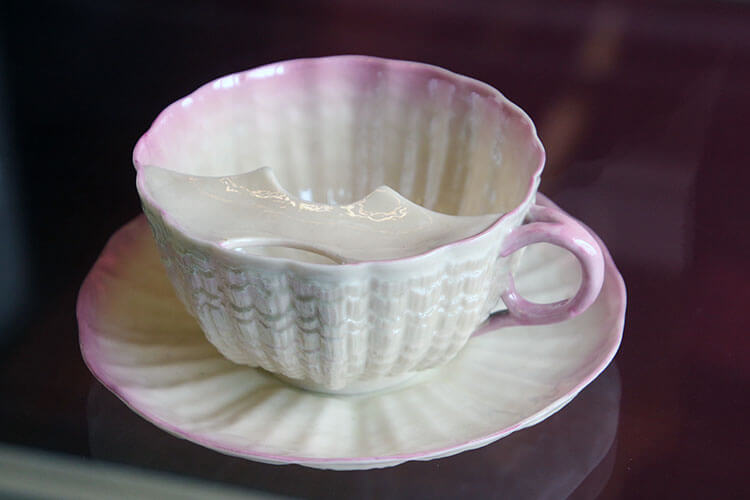
It was after the French Revolution that private porcelain factories were established in Limoges, including the world-famous Bernardaud. And Limoges maintains its position as the premier porcelain manufacturing city in France to this day.
The Adrien Dubouché National Museum should be your first stop in Limoges to learn about porcelain’s history. Not only does the museum take visitors on a beautiful blue and white journey of pottery and porcelain through the ages, it has a stunning section dedicated to the design of Limoges porcelain since its start to the present day. It is home to the world’s largest public collection of Limoges porcelain.
While the Adrien Dubouché National Museum pays tribute to the beautiful designs of porcelain, the Casseaux Porcelain Kiln Museum looks at a totally different side of the porcelain industry. Now a historical site dedicated to Limoges porcelain, visitors can see the only remaining kiln of Limoges’ original 130 that is open to the public.
Though the museum houses changing exhibitions of porcelain, it’s the kiln itself that is the pièce de résistance. Built in 1902, the kiln used a system with a round reversed flame and held between 10,000 – 15,000 porcelain pieces per batch. The last of its kind in France, the kiln was declared a historical monument in 1987.
The porcelain pieces would be placed in a type of container to protect them from the direct heat, then the containers were loaded in to the kiln. The fire had to built inside of the walls of the kiln, then it would be sealed up with bricks while the porcelain was fired inside.
It was so hot from the massive size and amount of wood needed for the fires, that the workers used incredibly long tools made of heavy iron to avoid getting too close and the tools themselves melting. The workers that dealt with the porcelain, which would have to be fired several times, truly did back-breaking work.
After seeing how porcelain was fired, visit the now fifth generation family run La Fondation Bernardaud. The Bernardaud brand has been synonymous with Limoges porcelain for more than 150 years, and Bernardaud porcelain is one you probably recognize if you’ve ever dined in the restaurants owned by some of the world’s most renowned chefs like Wolfgang Puck, Alain Ducasse, Guy Savoy or Joël Robuchon. Not surprisingly, the world’s most luxurious flight, the Concorde, served passengers on Bernardaud porcelain and they even got to take it home with them after the flight.
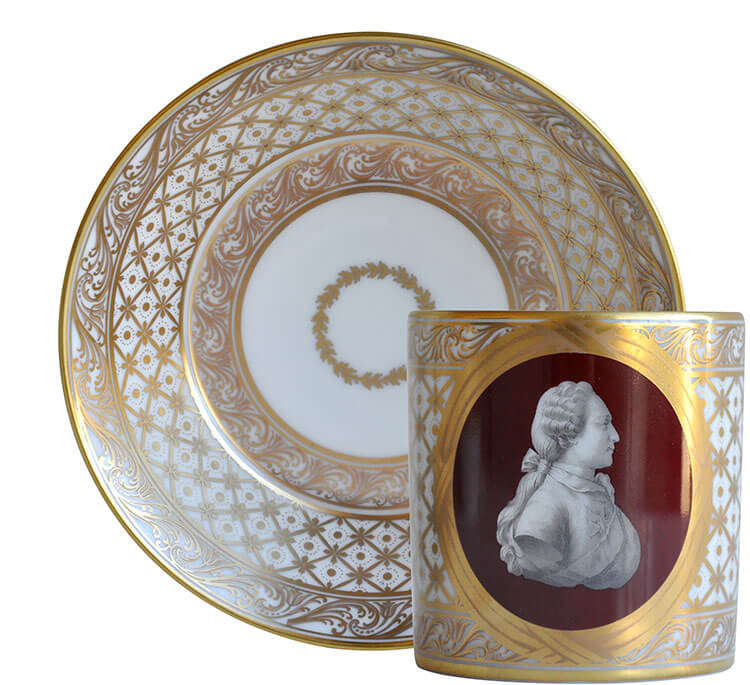
But Bernardaud isn’t just for the finest restaurants and glitziest hotels. Though Bernardaud started out in 1737 crafting the finest porcelain for the royals under the stamp of Ancienne Manufacture Royale of Louis XVI, Bernardaud has anticipated, invented and adapted through its 150 years. Porcelain isn’t just meant to be locked away or on display in a china cabinet and only for special use; porcelain is extremely durable and meant for every day use. There’s dishwasher safe porcelain, and even things like porcelain jewelry and other housewares. In fact, Tim and I were gifted a Bernardaud tea light votive from his mom for our wedding back in 2002.
The visit to La Fondation Bernardaud begins with a tour of how porcelain is made. It’s fascinating to see that the clay actually shrinks down quite a bit, which is a challenge artists must take in to account. And if you’ve envisioned some industrialized production process, think again. Much like the leather gloves of Saint-Junien and the tapestries of Aubusson, much of the Limoges porcelain process is entirely by hand.
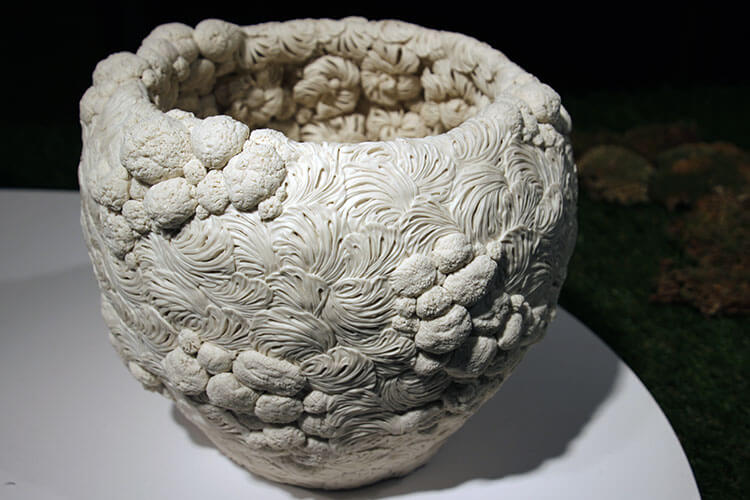
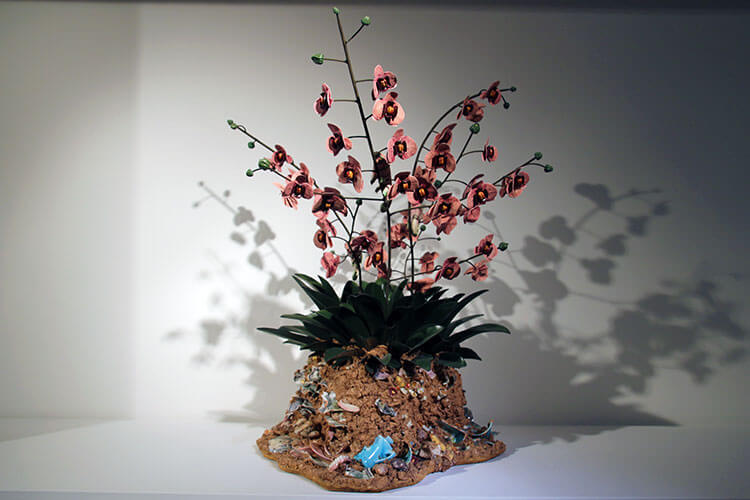
It made me appreciate the pieces by artists in Bernardaud’s annual exhibition that much more. The 2017 exhibition is a floral motif and the level of detail these innovative artists have achieved in their pieces is truly striking.
Know Before You Go
Hotel de France is a charming historic building in the center of Aubusson. Aubusson is small and all the sights are within an easy walk of the hotel.
Our tour was provided by Région Nouvelle-Aquitaine with support from Tourism La Creuse, Tourisme Limoges and Office de Tourisme de Saint-Junien in order to bring you this story. However, Luxe Adventure Traveler maintains full editorial control of the content published on this site. As always, all thoughts, opinions, and enthusiasm for travel are entirely our own. This article contains affiliate links. When you shop on book on Booking.com or Oui.SNCF through our affiliate partner sites, we earn a small commission at no additional cost to you.

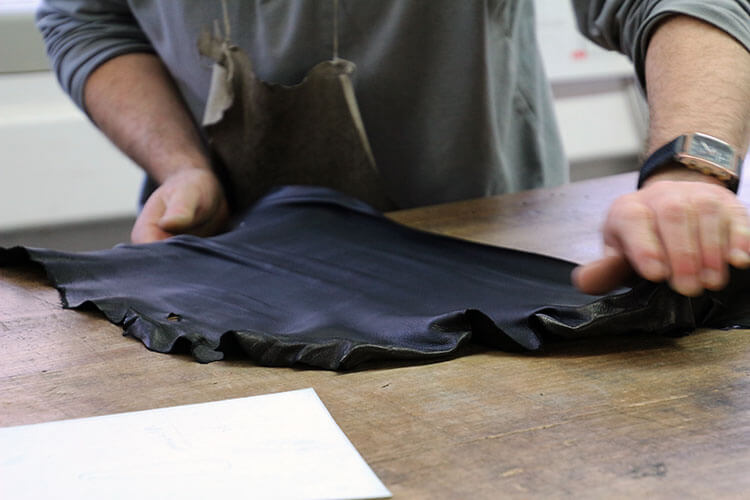
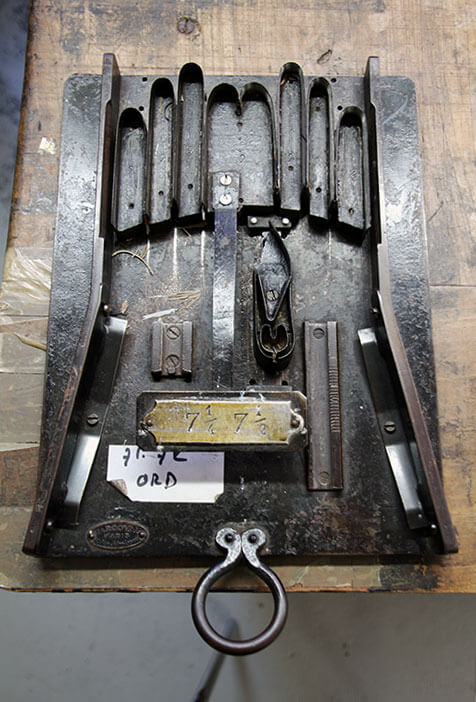
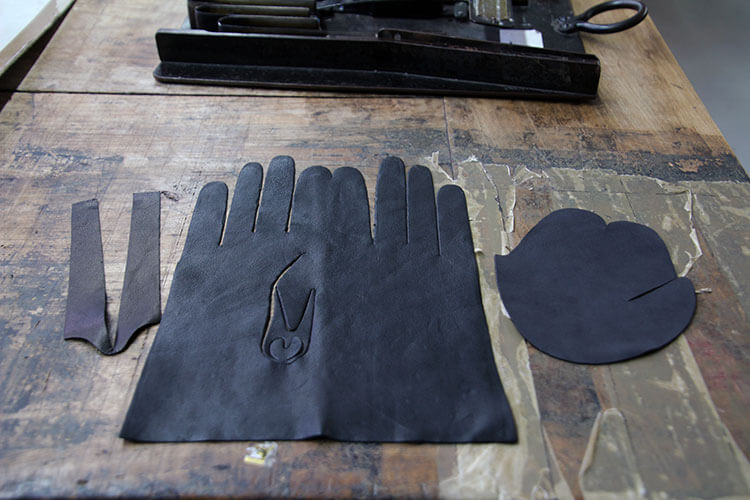




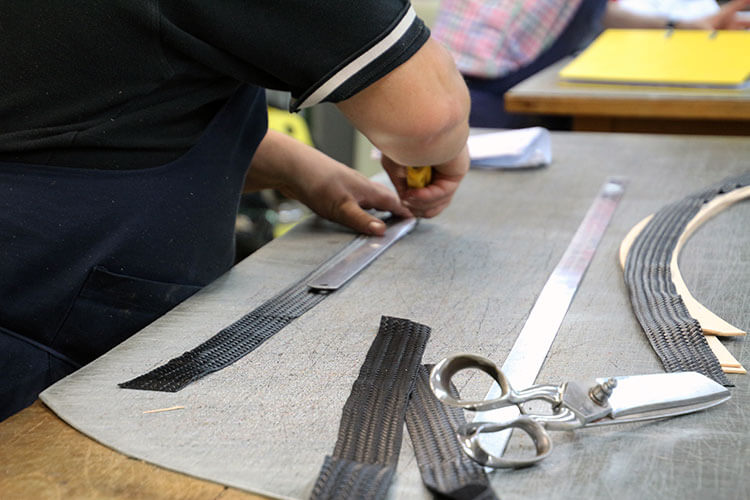
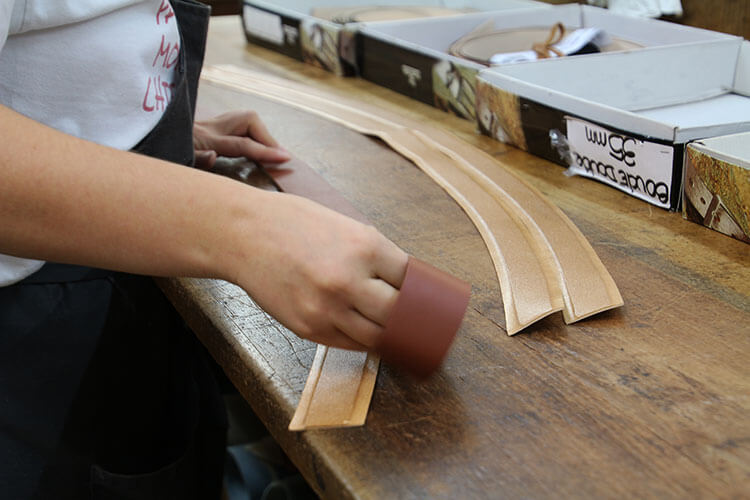
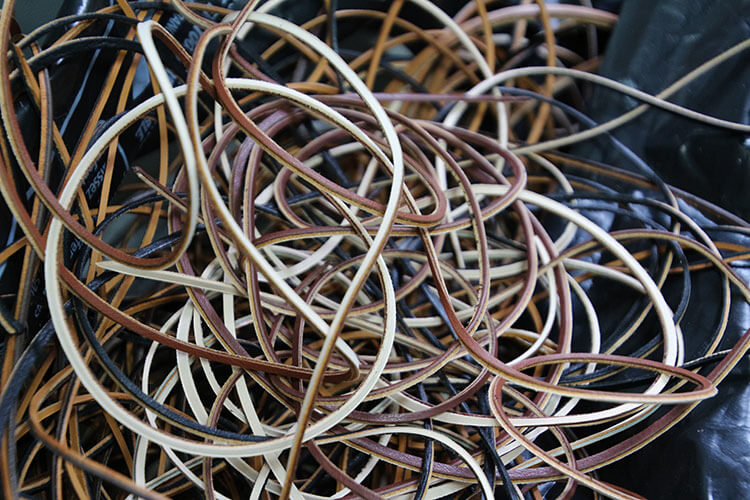
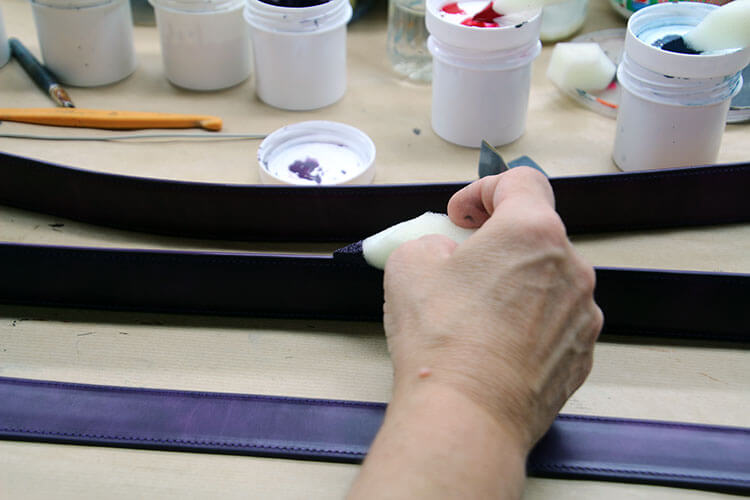
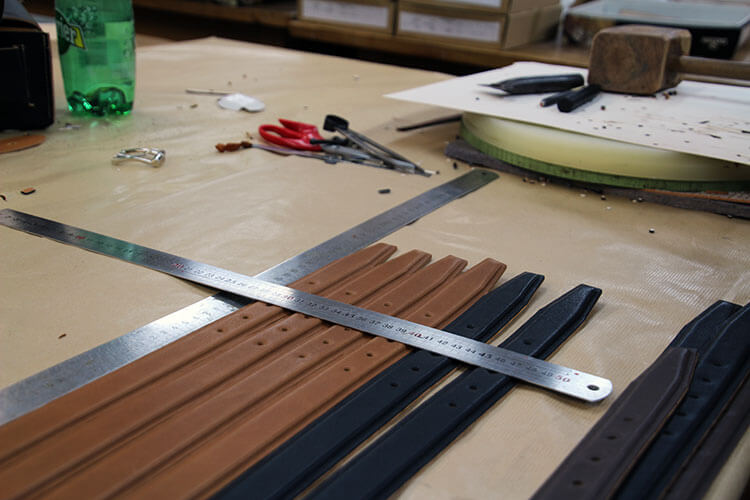
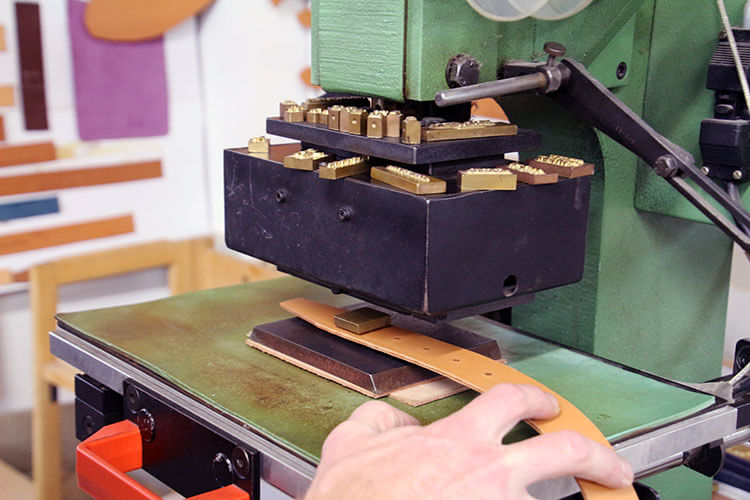
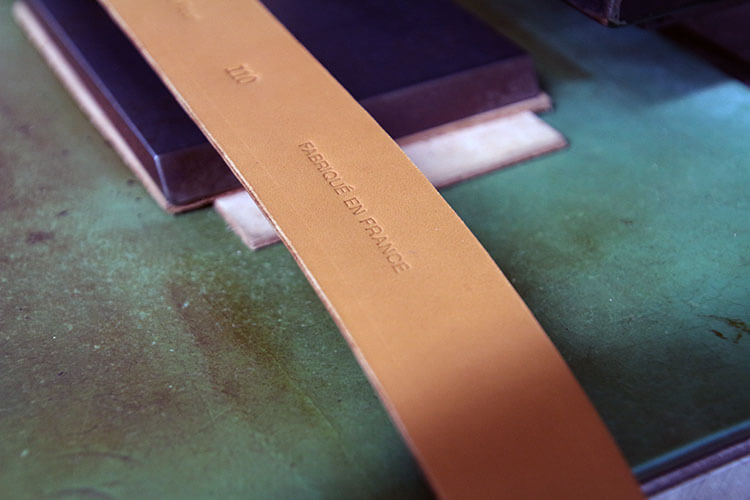

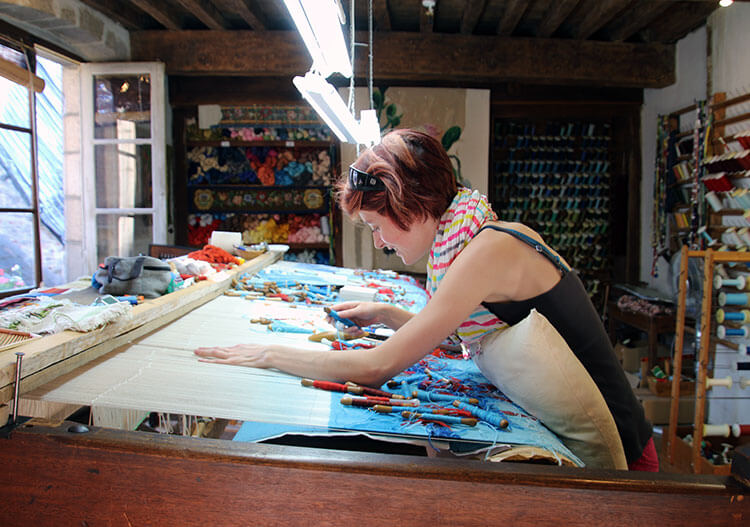
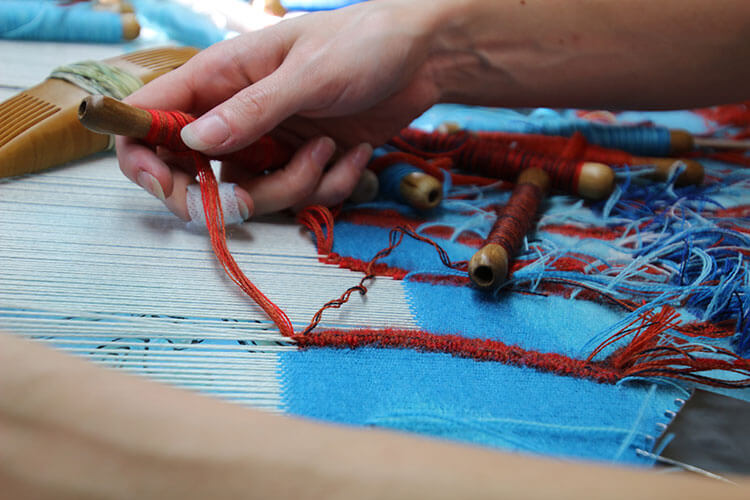
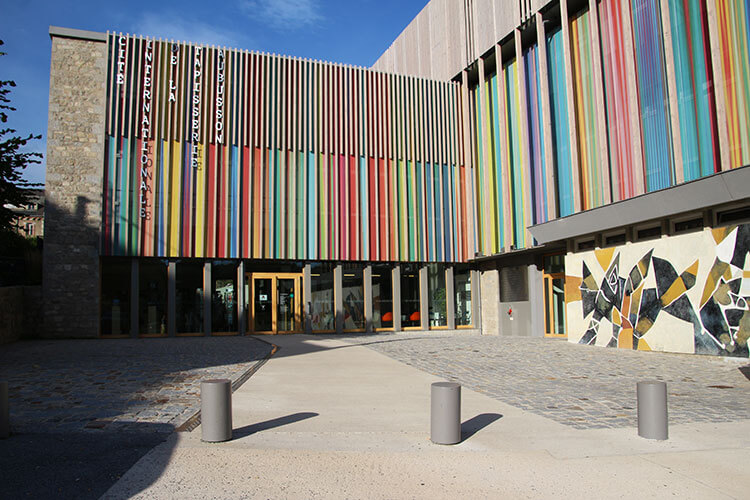
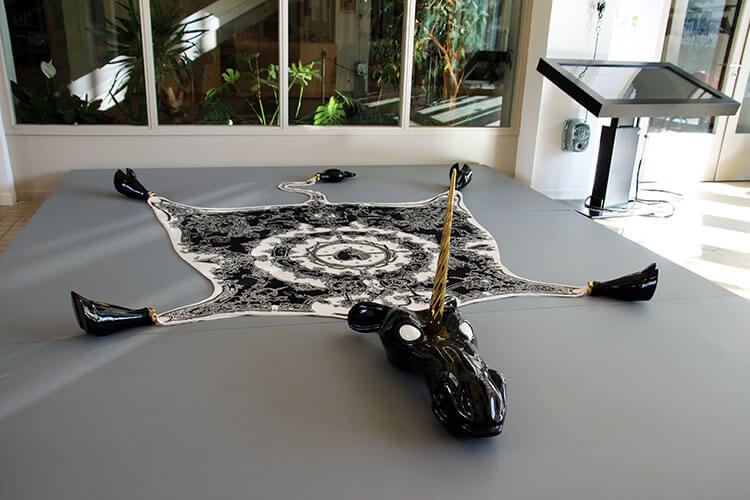
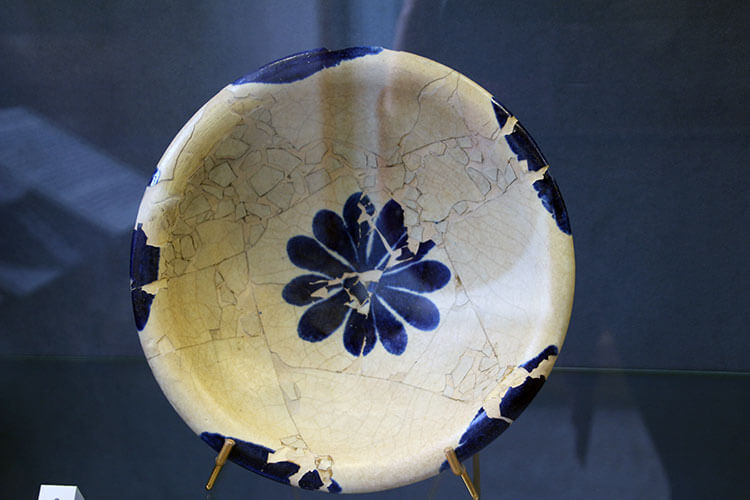
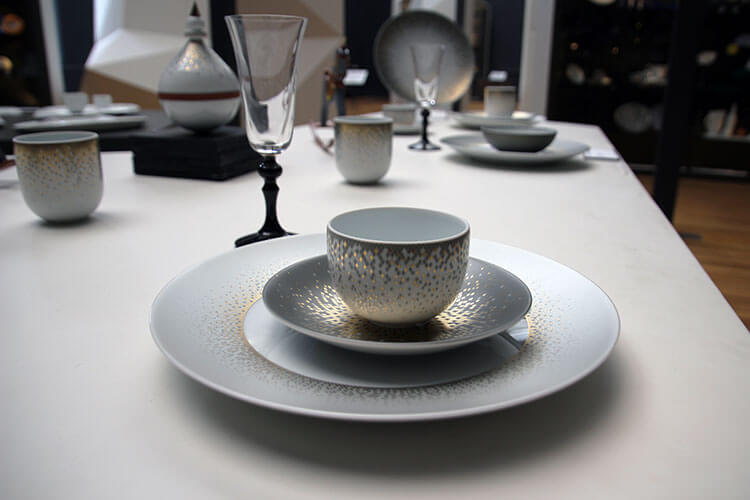
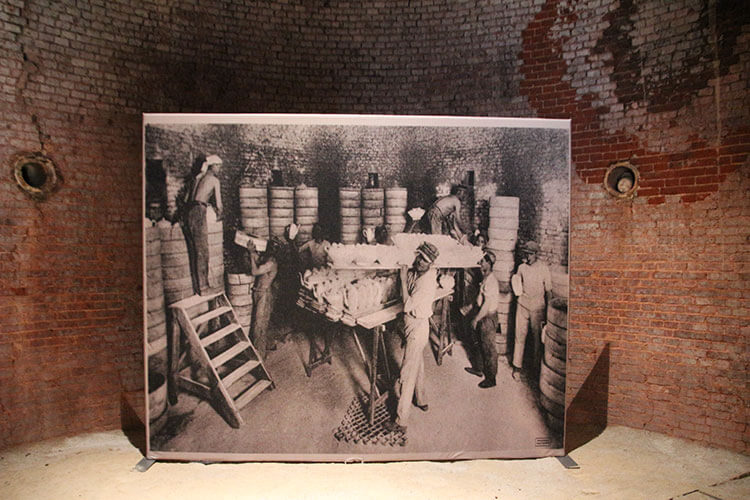
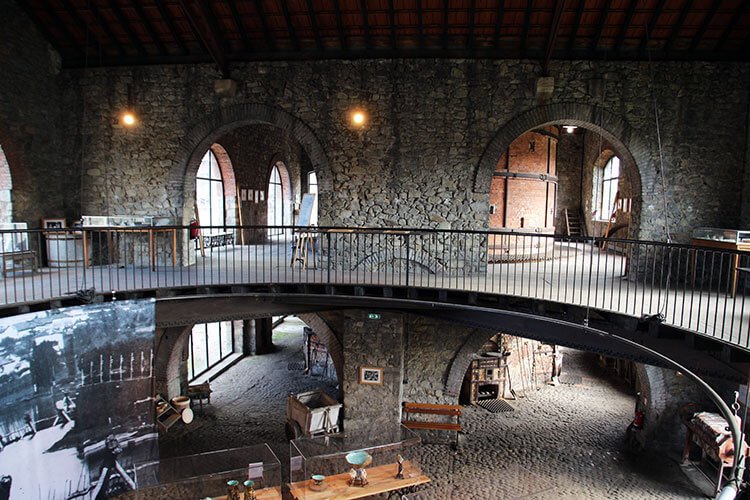
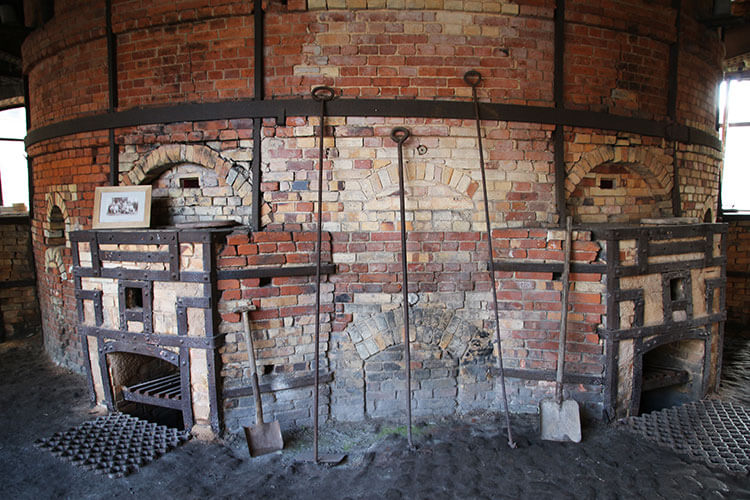
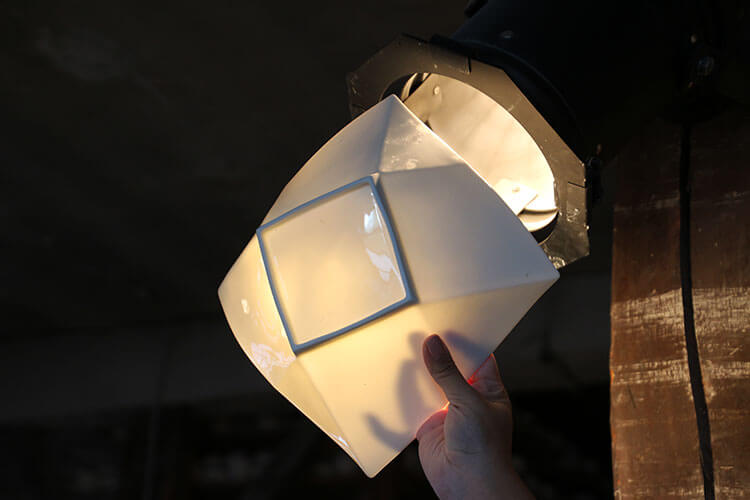

Muriel Eaton says
Hi! I am from the area you depicted and I enjoyed your article. There are a few more specialties than you covered , and just in luxury items, you might have added the Tulle lace, which is still alive and well. The French post office has in fact just issued a stamp about it.
Jennifer Dombrowski says
Hi Muriel! Thanks for letting me know about the Tulle lace. I hadn’t heard about it and I also didn’t have time to visit Weston for their leather shoes. I would have quite liked to also visit the Hermès glove factory too. Since I live in Bordeaux, I definitely plan to be back to Limousin to discover more!
Melanie says
First of all, thanks for all that background information. I think sometimes with all those cheap options on the market, we do forget who made our clothes or our stuff at home. That it is a lot of work and that work needs to be rewarded. I loved the background of each and every single product and I am happy to read you went somewhere else in France than most people and you got to know a really interesting background story. I loved the tapestry part a lot. This woman must be so passionate about her work, just the way you wrote about her.
Jennifer Dombrowski says
These workers are incredibly skilled craftspeople, which is why luxury products are so much more expensive. And the quality between a cheap product and a luxury one just can’t even be compared. I definitely find that my luxury products last – I have shoes, bags and even sunglasses that I’ve had for more than 10 years now. Meanwhile, cheap clothes and shoes I buy might only last one season before they’re showing wear.
Cathy Wilson says
Fascinating article about the manufacture of luxury items, Jennnifer. I especially enjoyed all the information on tapestry making and Limoges porcelain. Your career is giving you a fabulous eclectic education!
Jennifer Dombrowski says
Thanks, Cathy! I’ve definitely learned things that I never did in school. It’s true what they say about travel broadening your horizons and opening you to new worlds.
Tanvi says
I never knew that something that we usually use is so complicated to make.. I loved how you’ve written about your experience & you’ve explained the process in detail.. and ya you’re right it is definitely so hard on the workers because their hands get affected.. I hope someday there’ll be some solution to this.. And those utensils look mind blowing to me
Jennifer Dombrowski says
I’m not sure what exactly I expected. I suppose I never gave much thought to how my Louis Vuitton handbag was made, or by whom. And even though I have designer products that have lasted a long time, I still thought that much of the price tag is about the brand. But there’s a distinct difference in not only the quality of materials used, but the workmanship.
Rhonda Albom says
It’s very impressive how much work goes into each piece, whether a leather glove or a porcelain vase. In the modern day and age it’s hard to find handmade, high quality items. It’s impressive how many pieces can fit into the kiln at the Casseaux Porcelain Kiln Museum. I can’t even imagine being able to have that many to fire at one time.
Marcus and Mel says
With all the mass production and companies (even the luxury ones) using factories in the far east it is good to see that traditional skills and craftsmanship still remain. It would be nice to have a pair of those handmade gloves.
Jennifer Dombrowski says
I ended up getting two pairs in the Agnelle Factory Shop! Can’t wait to wear them.
Hannah says
This article was fascinating to me, because I have a house within an hour of all of these places, and only knew about the Limoges porcelain, not about the Arbusson tapestries or Saint-Junien leatherwork. I feel silly living within striking distance of these places and not knowing! The leather factories in Saint-Junien are of particular interest, as I find those skills very enviable. The French really do have a respect and high opinion of arts and crafts masters, and all these skills – tapestry, leatherwork and porcelain have such illustrious histories, so it is important to keep the skills alive. Thanks for sharing.
Jennifer Dombrowski says
Where do you live, Hannah? We live in Bordeaux!
Kavita Favelle says
I’ve driven though Limousin but on that occasion we didn’t stop, we had places to get to and not enough time. But I’d love to visit and learn more about the famous crafts and producers. I didn’t know about the beautiful leatherwork and I’d certainly like to see the tapestry weaving. Of course, most famous is the porcelain and having taking up pottery myself only recently, this would be my number one reason to visit. Really enjoyed the informative post, love detailed accounts like this!
Jennifer Dombrowski says
You would absolutely love Limoges, then! Porcelain is everywhere in Limoges, even surprising places like for street signs. Limoges really takes pride in their history of porcelain. I’ll have to look in to a porcelain making class where you make your own piece. That would definitely be fun and interesting to do!
Megan Jerrard says
I’ve not actually heard of Limousin before, but would love the opportunity to take a factory tour. Especially since it sounds like they have very strong cultural and historic roots – how incredible to watch as Louis Vuitton driving gloves are made at Agnelle, and to know that this factory has produced gloves for some of our biggest celebrities!
So lucky to have gotten a special look inside Daguet’s factory – sounds like a really fascinating process. When we’re in France next I’ll make sure we set aside some time for Limousin.
Jennifer Dombrowski says
Even most French people don’t go to Limousin, It’s really quite undiscovered still and truly off-the-beaten-path. I can’t wait to go back and explore more because the southern part of Limousin has great kayaking, hiking and loads of castles.
Samantha Sparrow says
I had never heard of Limousin before, but what a special place it is, and also what an influence it has had over French luxury culture. Beautiful leather gloves are totally my thing! I would want to visit with my Mum and Girlfriends, I’d love to do a Factory Tour. I’m also super fascinated by the Limoges porcelain. Thanks for giving another side to France!
Jennifer Dombrowski says
This trip would definitely really fun as a girl’s getaway!
Agness of e Tramping says
Wow! I would love to explore this place when in France, Jennifer. Thanks for the awesome and inspiring post!
Paige says
I had never heard of Limousin before reading this post. I had no idea that such hub of luxury existed! There are so many interesting works of luxury here. I think that my grandma, mom and I would have so much fun exploring these shops and factories. We always take little girls trips to window shop and I think all three of us would definitely Limoges. This is truly a stand-out post in a sea of France tips. Thanks for sharing!
Anna says
Never thought about how much goes into a pair of leather gloves! No wonder it’s a luxury item, you get what you pay seem true here!